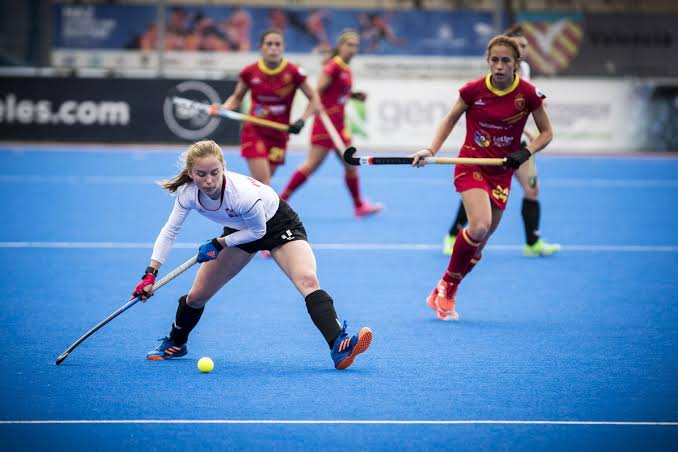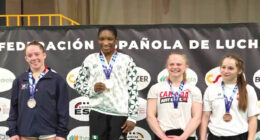 Field hockey is one of the oldest and most thrilling team sports in the world. Known for its fast-paced gameplay, intricate stick work, and deep tactical strategies, field hockey combines physical endurance, technical precision, and collective coordination in a dynamic contest of speed and skill. Played in over 100 countries, field hockey enjoys massive popularity in regions like Europe, Asia, Africa, and Oceania, and holds a special place in countries such as India, the Netherlands, Australia, Germany, and Pakistan, where it is considered more than just a sport — it’s a national passion.
Field hockey is one of the oldest and most thrilling team sports in the world. Known for its fast-paced gameplay, intricate stick work, and deep tactical strategies, field hockey combines physical endurance, technical precision, and collective coordination in a dynamic contest of speed and skill. Played in over 100 countries, field hockey enjoys massive popularity in regions like Europe, Asia, Africa, and Oceania, and holds a special place in countries such as India, the Netherlands, Australia, Germany, and Pakistan, where it is considered more than just a sport — it’s a national passion.
Unlike its cousin ice hockey, field hockey is played on grass or artificial turf and is governed by strict rules that emphasize sportsmanship, agility, and cooperation. Whether at the Olympic Games, the FIH World Cup, or grassroots youth leagues, field hockey continues to inspire and unite players and fans across the globe.
Historical Background
The origins of field hockey date back to ancient civilizations. Similar stick-and-ball games were played in ancient Egypt, Greece, and Persia, as early as 2000 BC. However, the modern form of field hockey developed in England in the 18th and 19th centuries, particularly among schools and military units.
The first formal hockey club, the Blackheath Hockey Club, was founded in London in 1861, and the Hockey Association of England was established in 1886, standardizing the rules of the game. Field hockey for women also gained traction during this time, led by schools and women’s colleges.
The International Hockey Federation (FIH) was founded in 1924 in Paris to govern the sport globally. Field hockey made its Olympic debut for men in 1908 and for women in 1980, and it has been a major Olympic sport ever since.
Basic Rules and Objective
Field hockey is played between two teams of 11 players each, including one goalkeeper. The objective is to score more goals than the opposing team by maneuvering a small, hard ball into the opponent’s goal using specially designed curved sticks.
- A standard match consists of four quarters of 15 minutes each (totaling 60 minutes).
- The game begins with a center pass, and teams switch sides at halftime.
- Players are not allowed to use their feet or any part of the body to control the ball, except for the goalkeeper inside the goal circle.
- The ball must be hit or pushed into the shooting circle (also called the “D”) before a goal can be scored.
If the match ends in a draw in knockout rounds or tournaments, extra time or penalty shootouts are used to determine a winner.
Playing Surface and Equipment
Modern field hockey is typically played on synthetic turf, which allows for faster and smoother play compared to natural grass.
Essential equipment includes:
- Hockey stick: Made from wood, fiberglass, or carbon fiber, and only one side (the flat side) is permitted for hitting the ball.
- Ball: Hard, plastic, and roughly the size of a baseball.
- Shin guards, mouthguards, and gloves: For protection.
- Goalkeeper gear: Includes helmet, chest pad, leg guards, and kickers to block shots.
Player Positions and Roles
Though fluid, field hockey typically features structured positions:
- Forwards: Focus on scoring and attacking the opponent’s goal. They require speed and stick skills.
- Midfielders (Halfbacks): Play both offense and defense. They control the game’s tempo and distribute the ball.
- Defenders (Fullbacks): Protect the goal area and prevent opposition attacks.
- Goalkeeper: The last line of defense, equipped to block shots with any part of the body within the goal circle.
Each player must understand not only their own role but also the flow of the game to support both offense and defense as needed.
Skills and Techniques
Field hockey is a skill-intensive sport that emphasizes both individual prowess and team synergy:
- Dribbling: Moving the ball using quick, controlled movements of the stick.
- Passing: Includes push passes, slap hits, and aerial balls to move the ball quickly and strategically.
- Tackling: Defenders use flat sticks and body positioning to win possession cleanly without fouling.
- Shooting: Shots on goal can be executed with flicks, drives, or reverse-stick hits.
- Ball control: Players must control the ball with finesse and speed, especially under pressure.
Mastering these techniques requires years of training, physical conditioning, and tactical understanding.
Field Hockey Tactics and Formations
Modern field hockey relies heavily on tactical planning and formation discipline. Common formations include:
- 4-3-3: Balanced approach with attacking width and defensive solidity.
- 3-4-3: More offensive, with an emphasis on pressing and quick transitions.
- 4-4-2: Traditional setup with strong midfield control.
Zonal marking, man-to-man defense, and high pressing are used to disrupt opponents, while coordinated set plays are crucial during penalty corners and free hits.
Set Pieces: Penalty Corners and Shootouts
- Penalty Corner: Awarded for defensive fouls inside the circle. A player pushes the ball from the backline to teammates at the top of the circle for a shot on goal. This is a critical scoring opportunity.
- Penalty Stroke: Awarded for major fouls preventing a goal. A one-on-one shot is taken against the goalkeeper from a spot 6.4 meters (7 yards) from the goal.
In case of tied knockout games, penalty shootouts involve attackers dribbling in from the 23-meter line to beat the goalkeeper within 8 seconds, adding high drama to tight contests.
Major Tournaments and Global Presence
Field hockey is governed internationally by the International Hockey Federation (FIH), which organizes premier competitions including:
- FIH Hockey World Cup (held every four years)
- FIH Pro League
- Olympic Games
- Champions Trophy (replaced by the Pro League)
- Continental Championships (EuroHockey, Asian Games, Pan American Cup)
India and Pakistan dominated the early decades of international hockey, winning multiple Olympic and World Cup titles. In more recent times, Australia, Germany, the Netherlands, Belgium, and Argentina have emerged as leading contenders in both men’s and women’s competitions.
Women’s Field Hockey
Women’s hockey has grown tremendously over the past few decades. Teams like the Netherlands, Australia, Germany, and Argentina have led the way in international competition, delivering fiercely contested matches with high skill and passion.
The Women’s Hockey World Cup, the Olympics, and the FIH Pro League showcase top-tier female athletes and have helped elevate the sport’s visibility and support worldwide.
Health and Fitness Benefits
Field hockey is a demanding sport that provides numerous physical and mental benefits:
- Cardiovascular endurance: Constant movement and sprinting improve heart health.
- Strength and agility: Quick direction changes and tackling build muscle and coordination.
- Mental focus: Requires concentration, quick decision-making, and spatial awareness.
- Teamwork and communication: Essential for building cohesion and achieving success.
Discipline and resilience: The intensity of the game teaches emotional control and perseverance.
Field hockey is a sport that embodies the perfect blend of grace, grit, and strategy. Its rich history, global appeal, and exciting gameplay have earned it a devoted following across continents. Whether played at a recreational level or on the grand stage of the Olympics, field hockey inspires excellence, encourages camaraderie, and promotes fitness and fair play.







